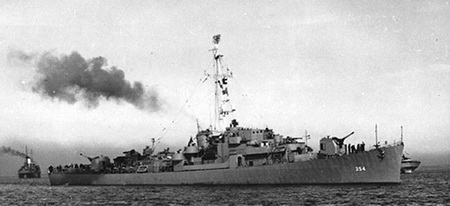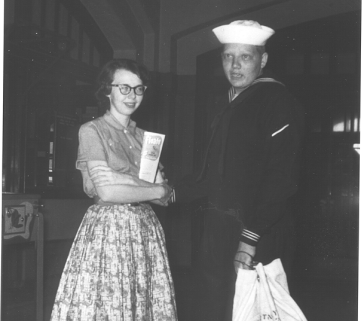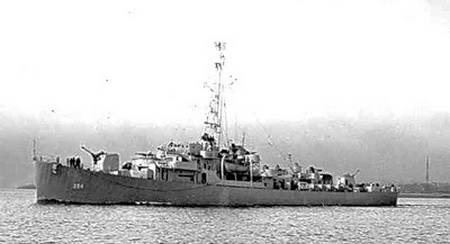When I was in the Navy I went through a hurricane in the Gulf and wrote an article about it on this blog called “My Perfect Storm.” Since that writing I have been contacted by another person, Tom Ferstl, who was also there with me. Tom was the Helmsman during the hurricane and answered many questions I had about the event. The hurricane occured in late June of 1957. It was a big one named Hurricane Audry. We had previously visited Dry Tortugus and Cuba. I also learned sadly that the Captain of the Willett, LCdr Robert J. Fay was the very first Navy Seal killed in Vietnam.
I will list below the email we exchanged and below that are the pictures he sent. This event happened over 53 years ago, I remember the hurricane vividly, but needed some help on the dates.
TOM
I just stumbled across your site. If the storm you are referring to was in 1957 or 1958, I don’t remember, but I was the helmsman during a similar such hurricane, and we had visited Dry Tortugas!ME
Yes, it could have been either one of those years, around July. Email me and we can compare notes.TOM
Thanks for the response. I usually check out search for the Willett and see if there are anyone interested in or holding a reunion. No such luck, but I did come across your website and your story of the Perfect Storm which I thought was excellent.In looking back at my memorabilia I determined that it was in 1957 because in 1958 there were only two radarman; RD2 Eugene Gilliam and RD3 Louis Thomassie. In 1957 I was on the deck force and a helmsman. In 1958 I was transferred to the Operations Department under RM1 Francis Miller as a RMSN(Striker).
The CO was LCdr Robert J. Fay who became the very first Navy Seal killed in Vietnam.
As I recall, we usually took our reserves down to Cuba, Canal Zone, Haiti, Barenquilla, etc and back to NO. We did stop in Dry Tortugas in 57 but that changed so in 58 we made a cruise to Quebec via Charleston, Brooklyn, Boston and to Quebec and the cruise was over 30 days at sea. The cruises to the Carribean was 2 weeks with a weekend in port.
If you like, I can email you an update photo of the Willett. That photo you have is a WWII photo. I am on my laptop and my photo’s are on my workstation.
Sorry but I forgot to even mention the storm. As I mentioned I was a helmsman and for some reason I had a talent for that DE and keeping her on the bearing. So, whenever we went into turbulant waters, I would be called to the bridge to relieve the helmsman. The CO liked the way I responded to OOD orders and maintained the bearing.
I was called to the bridge that time and when the swells became very great, I was actually lashed down to keep me at the wheel. I remember most of the reservists became violently sick and many of the crew. For some reason I was never sea sick in my 9.5 years in the Navy? I learned to eat saltine crackers to keep from being seasick.
The reason we got into that storm actually Hurricane Audry because during that time, we had no satellite or early warning and had to go by barometer readings and international morse code weather broadcasts which had to be analyzed. We actually was steaming towards the front rather away from it!
Do you recall which ports we visited on that cruise?
Did you stay in the Reserves? For me, I spent 9.5 years in the Navy after 2-tours in Vietnam and then transferred to the USAF where I retired from in 1977.
ME
Thanks so much for writing me. Yes, I would like to have the picture of the Willett. We went to Cuba on that trip with a stop at Dry Tortugas as my memory serves. I was actually a radarman on the ship as a reserve. I said in the writing I saw the storm on radar about 30 minutes before it hit us. I will never forget that night if I live to be a hundred. When I looked at the picture of Captain Fay I recognized him instantly. He became very sick also after the event was over.Do you remember the motor whale boat being cut in two by a wave and the crew that went out to chop the remains of it off the ship? In 1957 I was 20 years old, and I am 73 now. Did you see a picture of me on my site under the personal info? If you have a picture of yourself I might remember you as I did the captain. I may have a picture of myself as I look then if I can find it.
I joined the Naval Reserve in 1954 for an eight year enlistment. When it was over in 1962 I went back to being a civilian. I enjoyed my cruises in the Navy, I loved the ocean, except for that hurricane.
If you remember more please write I truly enjoyed your letters.
TOM
Here are some photos. The photo of me and the wife was taken several years go. After we put the Willett out of commission in Orange Texas, I went home in Feb 1959. She and I got married and we now have 4 sons, 14 grandchildren and three great-grandchildren with another great-grandchild on the way. It has been a very interesting ride.

New Picture of U.S. Willett, 1959.

Tom and his wife, 1959.

Me and my wife to be, 1957.
© 2010, Lekatt. All rights reserved.
![]()


